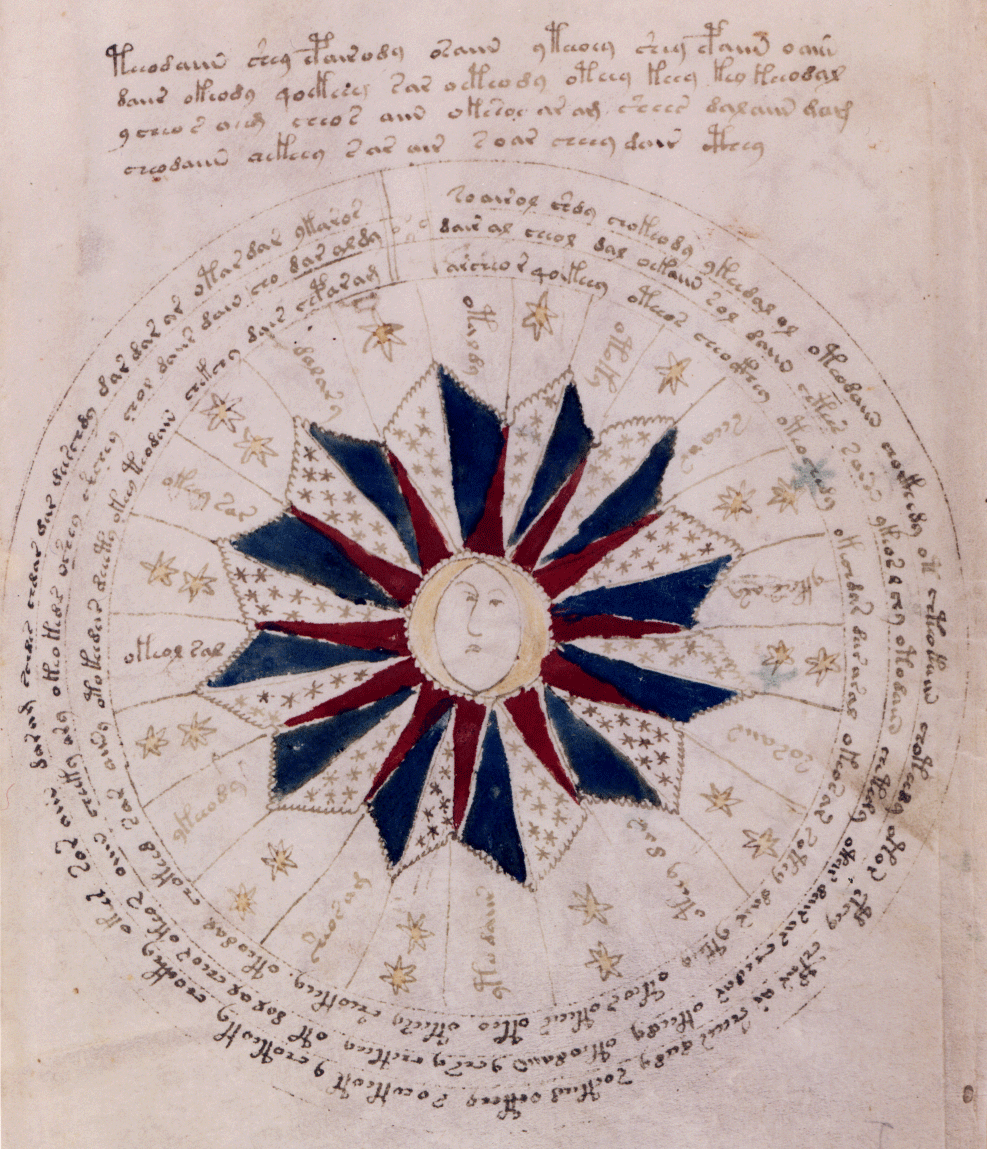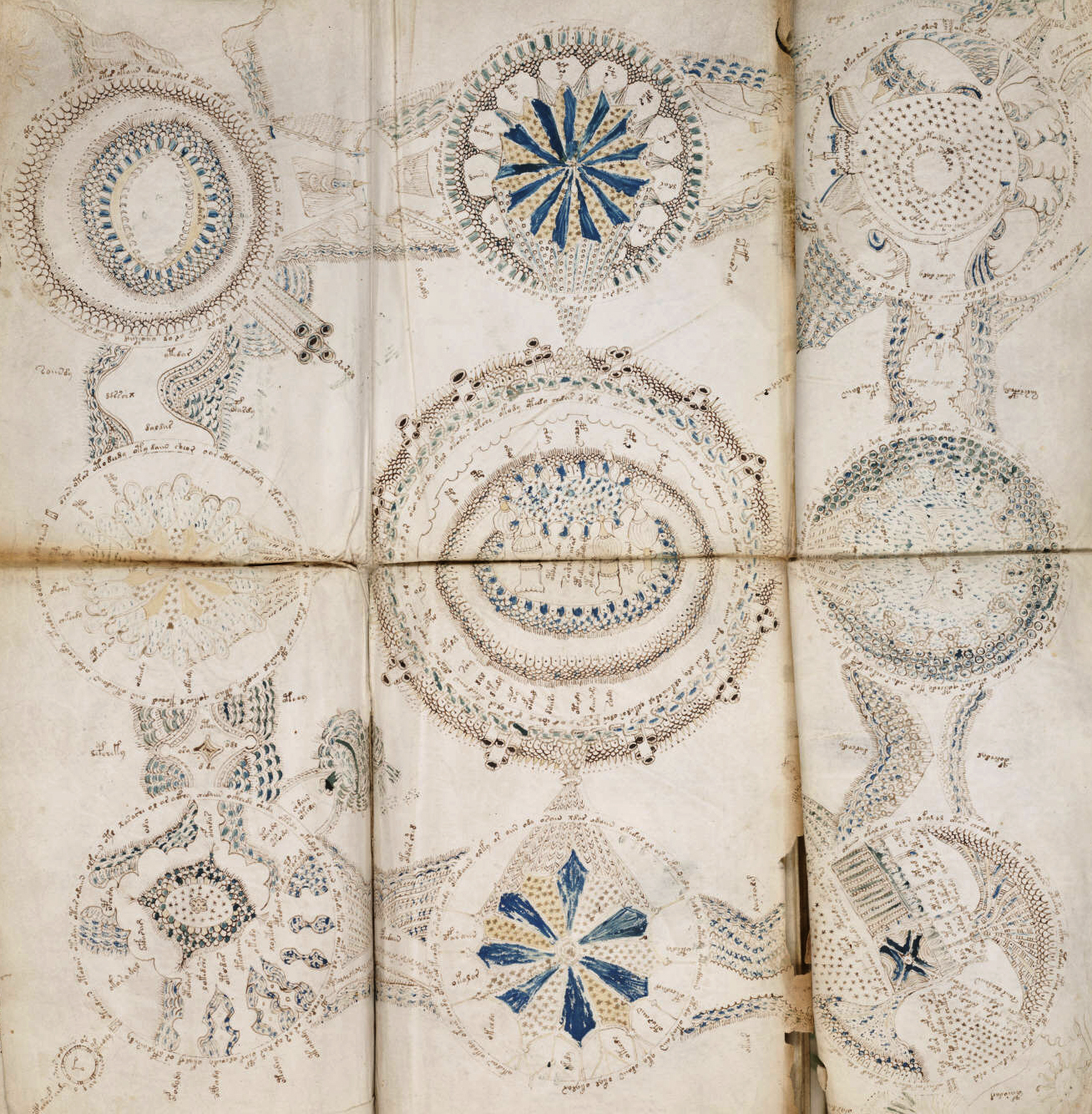 The Voynich manuscript dates back at least to the seventeenth century, though it is possibly much older. It is approximately 240 pages long, and its pages are filled with hand-written text and crudely drawn illustrations. The illustrations depict plants, astrological diagrams, and naked women. These illustrations are strange, but much stranger is the text itself, because the manuscript is written entirely in a mysterious, unknown alphabet that has defied all attempts at translation.
The Voynich manuscript dates back at least to the seventeenth century, though it is possibly much older. It is approximately 240 pages long, and its pages are filled with hand-written text and crudely drawn illustrations. The illustrations depict plants, astrological diagrams, and naked women. These illustrations are strange, but much stranger is the text itself, because the manuscript is written entirely in a mysterious, unknown alphabet that has defied all attempts at translation.The manuscript first came to the attention of modern scholars in 1912 when Wilfrid M. Voynich (after whom it is now named) discovered it tucked away in the library of Villa Mondragone, a Jesuit college in Frascati, Italy. He purchased the manuscript and brought it with him back to America.

 The history of the manuscript before Voynich found it is unclear. A letter inserted between its pages revealed some of its history. The letter was dated 1665 or 1666 (the writing was unclear) and was addressed to Athanasius Kircher from Johannes Marcus Marci. Marci explained that the book had once been owned by Emperor Rudolf II, who believed it had been written by the English monk Roger Bacon (1214-1294?). Marci was hoping that Kircher would be able to translate the manuscript, but apparently Kircher was unable to do so.
The history of the manuscript before Voynich found it is unclear. A letter inserted between its pages revealed some of its history. The letter was dated 1665 or 1666 (the writing was unclear) and was addressed to Athanasius Kircher from Johannes Marcus Marci. Marci explained that the book had once been owned by Emperor Rudolf II, who believed it had been written by the English monk Roger Bacon (1214-1294?). Marci was hoping that Kircher would be able to translate the manuscript, but apparently Kircher was unable to do so. Upon his return to America, Voynich circulated photostat pages of the manuscript to scholars whom he hoped could help him decode its strange alphabet. Cryptographers rushed to take up the challenge.
Upon his return to America, Voynich circulated photostat pages of the manuscript to scholars whom he hoped could help him decode its strange alphabet. Cryptographers rushed to take up the challenge.The first to announce a solution to the manuscript’s code was William Romaine Newbold in 1921. After microscopically examining the letters of the manuscript, Newbold decided that the letters were not themselves meaningful. The real meaning lay in the individual pen strokes that composed each letter and which, so Newbold claimed, corresponded to an ancient Greek form of shorthand. Newbold’s translation, however, now reads more like a work of madness than the work of a rational mind, since what he believed to be individual pen strokes were, in fact, simply cracks in the manuscript’s ink caused by age.
 In 1943 Joseph Martin Feely, working on the assumption that the manuscript had originally been written by Roger Bacon, attempted to match the frequency of characters in the text to the frequency of characters within Bacon’s other writings, and decode it in this way. His effort, however, proved unsuccessful.
In 1943 Joseph Martin Feely, working on the assumption that the manuscript had originally been written by Roger Bacon, attempted to match the frequency of characters in the text to the frequency of characters within Bacon’s other writings, and decode it in this way. His effort, however, proved unsuccessful.In the 1970s Robert Brumbaugh, using a complicated decoding scheme, decided that the manuscript was either a medieval treatise on the elixir of life, or a sixteenth-century hoax.
Since then, a variety of theories about the manuscript have been suggested. In 1978 John Stojko argued that it was an account of an ancient civil war written in an ancient, vowelless
 form of Ukrainian. In 1986 Michael Barlow suggested that Voynich himself had written the manuscript as a hoax. In 1987 Leo Levitor theorized that it was an ancient prayer-book, offering repetitive meditations on the themes of pain and death. More recently, Jacques Guy has wondered whether it might not represent an ancient attempt to transcribe an east-Asian language, say Chinese or Vietnamese, into alphabetic form.
form of Ukrainian. In 1986 Michael Barlow suggested that Voynich himself had written the manuscript as a hoax. In 1987 Leo Levitor theorized that it was an ancient prayer-book, offering repetitive meditations on the themes of pain and death. More recently, Jacques Guy has wondered whether it might not represent an ancient attempt to transcribe an east-Asian language, say Chinese or Vietnamese, into alphabetic form.To this day the Voynich manuscript resists all efforts at translation. It is either an ingenious hoax or an unbreakable cipher. It is thought that the horror writer H.P. Lovecraft might have used the Voynich manuscript as the model for the fictional work, The Necronomicon, which he refers to in many of his stories.
No comments:
Post a Comment